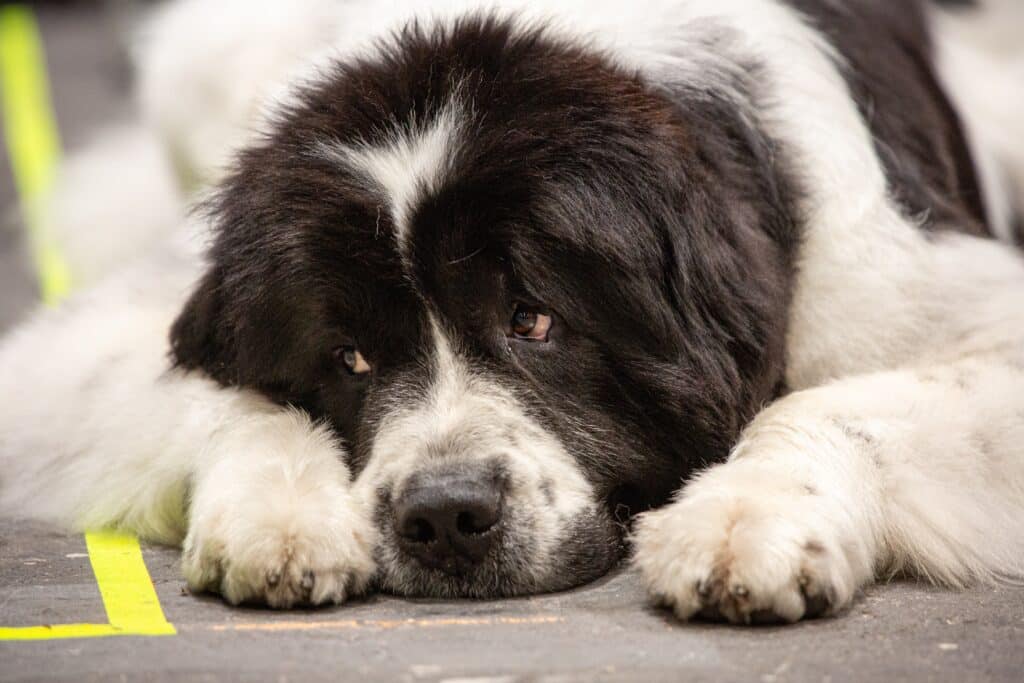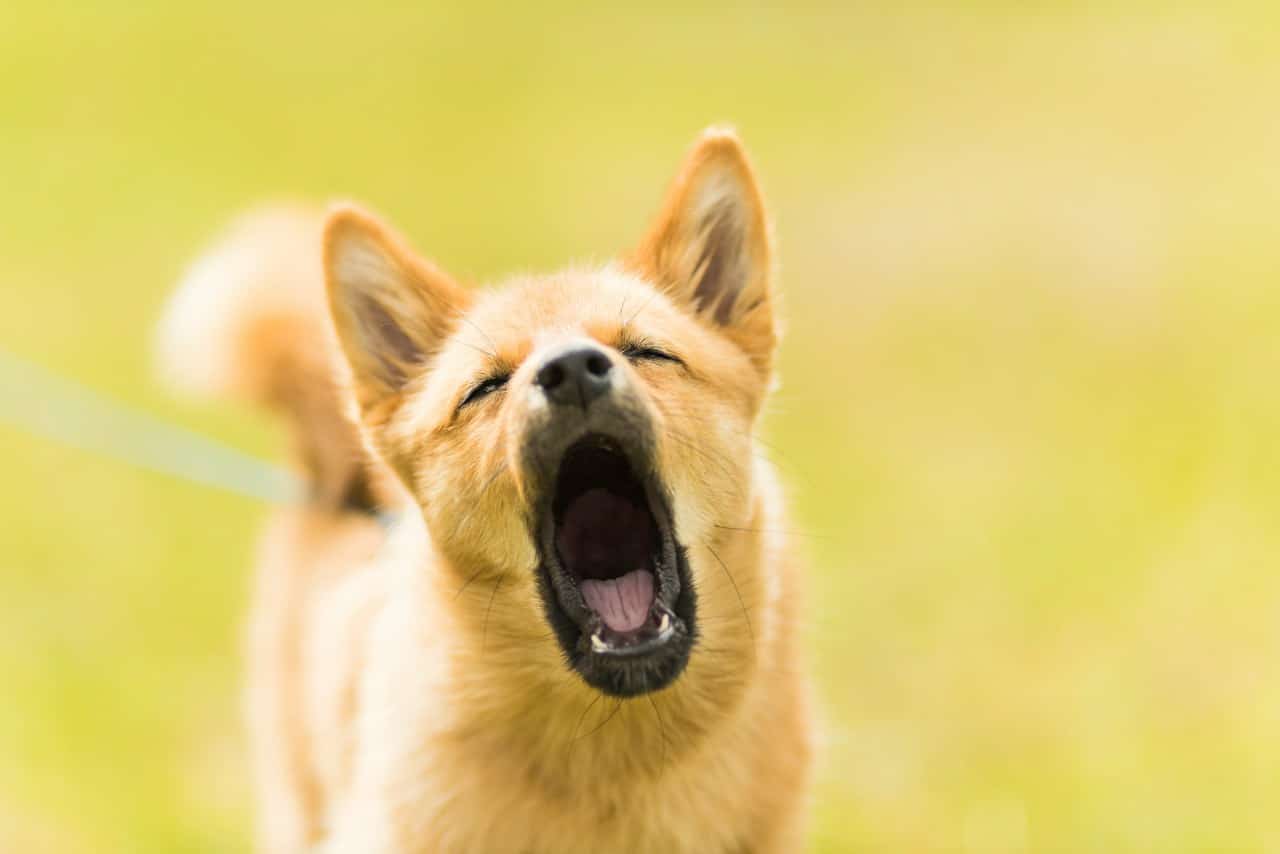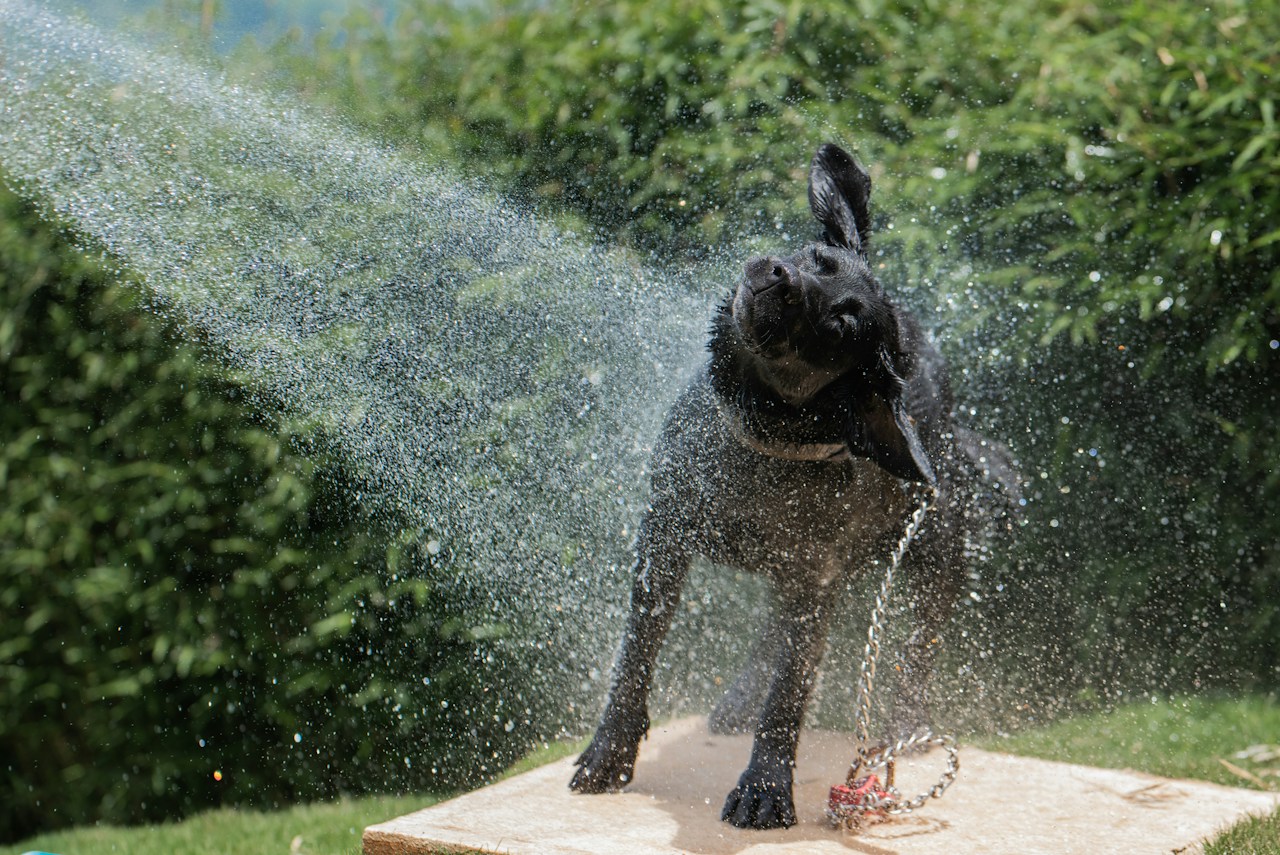The Newfoundland is a beautiful, large, yet quiet dog . It is normally black in color although there are brown and white versions with black spots.

He is genuinely loving and protective of the people he loves and is very patient with children. The Newfoundland dog in addition to being cute is an excellent rescue dog , he has saved the lives of many people throughout history. He is undoubtedly a fantastic swimmer.
The Newfoundland comes from Canada and is known as “the gentle giant”. He is one of the largest and most generous dogs in existence and if you are thinking of adopting one, you will certainly not be disappointed and we are sure you will fall in love with his fidelity, sweetness and cheerfulness.
Although there are many myths related to the breed, in this AnimalPedia fact sheet about the Newfoundland dog we explain to you what are its true origins, character, physical characteristics, the needs to be healthy and many other curiosities about this splendid animal. However, starting immediately, we warn you that it is a dog that needs attention and that it is not suitable for those who are never at home or are fanatic of cleaning.
Origins of the Newfoundland
Tearranova’s homeland is Newfoundland Island (the English translation of Newfoundland) in the east coast of Canada, also known as Newfoundland Island. There are many hypotheses about the origins of this widespread breed and it is thought that it developed from the crossing of the native dogs of the island with the dogs that from the year 1100 imported the ancient Vikings, such as the great black bear dog .
Later in 1610, with the arrival of European fishermen and during the colonization of the island, new breeds of dogs arrived which they mingled with. The Newfoundlands already had their own morphology and standardized characteristics but, with the new crossings, the breed was renewed giving life to the current Newfoundland.
Thanks to his characteristics he was able to withstand the harsh climate of the island and work at sea, pull heavy loads (nets, lines and sleds), work as a rescue or retriever dog. Today he continues to be an excellent rescue dog both at sea and on land. It is considered to be one of the most beautiful and hardworking breeds in history.
Many historical figures have owned dogs of this breed including Napoleon, George II, Wagner and Lord Byron. The latter loved his Newfoundland named Boatswain so much that, when the latter died of contracting anger, he dedicated an epitaph engraved on his grave to him. The epitaph begins like this:
In this place
lie the remains of a creature
who possessed beauty
but not vanity
strength but not arrogance
courage but not ferocity
And all the virtues of man
without its vices.
This praise, which would be nothing but empty flattery
on the ashes of a man,
it is an absolutely dutiful homage to the memory of
“Boatswain”, a dog that was born in Newfoundland
in May 1803
and died at Newstead Abbey
on November 18, 1808.
Physical characteristics of the Newfoundland
The Newfoundland is a large, powerful and robust dog . It is longer than tall, therefore with a rectangular shape, but at the same time compact. The line of the back is straight, with the back firm from the withers to the rump. the skeleton is massive in all its parts. Seen in profile, the trunk is tall and vigorous. The back is broad, strong and the rump oblique, while the abdomen is never retracted. The chest is broad and deep and the tail is long, strong and broad at the base; it should never be rolled over the back or curled forward between the legs.
The conformation of the rear in the Newfoundland is of primary importance for the dog to be able to pull loads, swim or cover large distances quickly. For this the pelvis is strong and long and the thigh wide and muscular. The feet are large, proportionate and well rounded, with close and solid toes. The feet are webbed, in fact it has a skin membrane between the toes. Obviously this helps in swimming.
The head is massive, broad and with a well developed occipital bone. The stop is always clearly visible but never very marked such as the San Bernardo . The nose is large, well pigmented and with developed nostrils. It can be black in color in both black dogs and in black and white dogs, while it is brown in color in brown dogs. The muzzle is decidedly square, high and moderately short, covered with a short and fine hair, without wrinkles.
The eyes are relatively small and deep set in their sockets. They are well spaced and dark brown in black and white and black specimens. In brown dogs, on the other hand, lighter shades of the eyes are admitted. The ears are close fitting, relatively small and triangular, but with rounded ends.
The Newfoundland’s coat has a double coat. The inner layer is dense and soft while the outer one has a long and smooth coat, except on the head, ears and muzzle where it is shorter. The coat of this dog is waterproof and has fringes in the front and rear limbs. Today the breed is divided into three different varieties according to the color of the coat: black (the most common color), brown (defined brown) and white with black spots (defined “landseer type”, not to be confused with the landseerreal recognized by the FCI). These colors are recognized in Europe while in America bronze and gray are also recognized. In the puppy the hair is very soft and is replaced by the adult one at about seven months.
- Black : is the traditional color of this breed. The color must be as uniform as possible, but a slight bronze shade is admitted together with any white spots on the chest, on the toes and / or at the tip of the tail.
- Black and White : This variety has historical significance for the breed. Black head with a white stripe extending over the muzzle, a black blanket with patches and a black rump with a black upper part of the tail. The other regions must be white and may have a minimum of ticking.
- Brown – this color ranges from chocolate to bronze. Here, too, white markings on the chest, toes and / or tip of the tail are allowed.
The average height at the withers of the Newfoundland is 71 cm at the withers for males and 66 cm for females; instead the average weight for males is about 68 kg and 54 kg for females.
Character of the Newfoundland
Despite its large size, the Newfoundland is a particularly sweet and affectionate dog , sociable and with a calm character. It is not overly playful, although it is very famous for its very water loving characteristic . In fact, it has certain physical characteristics such as waterproof hair, webbed legs and the ability to use the tail as a rudder, which make it a perfect swimmer, the result of the selection practiced by man.
He is sociable not only with humans but also with other dogs and animals, he is very patient and reliable with children whom he adores and treats with incredible gentleness and affection. It is a breed that gets very attached to its owner and in general to the family that looks after it, for this reason it absolutely needs contact with the owner with whom it must interact continuously.
From a character point of view she is kind, intelligent and adaptable to many lifestyles . He is very friendly and hardly reacts angrily to a situation, unless there is real danger to the master. In these cases it can rely on size and power. It is still used as a rescue dog and its instinct to rescue is so strong that, if not properly trained, it can even save those who are actually in no danger. As he works he shows off his proud and regal bearing .
This dog is quiet and non-aggressive, but can be very determined and ferocious when defending loved ones. It is a perfect dog for guarding and deterring any attacks. However, they are generally totally harmless.
Caring for the Newfoundland
The Newfoundland in the first year of life need special attention in feeding. Being a dog that grows very fast (even up to 300 g per day) we must offer him a rich and balanced diet but without exaggerating because the risk of being overweight is high . because unfortunately it is a predisposing factor to hip and elbow dysplasia.
As an adult, the Newfoundland will need large quantities of protein-rich food: remember that its weight ranges from 54 to 68 kg and that every day we will have to give it an average of 500 g of feed, depending on the quality of the food and the actual weight of the dog. Despite his size, he is not particularly active, but it is important that he always exercise to avoid being overweight. We recommend at least 3 walks a day and to take him often to the park, in the woods or in the open field where to practice play sessions. He loves the water so a beautiful beach or a lake are congenial to him.
It is important to brush the very thick mantle, eliminating grass and pieces of wood that nest in it after walks. The ideal treatment for the hair, in addition to daily brushing , is to blow the skin with a blower that can be found on the market because it helps to avoid dermatitis problems . Brushing the hair is essential especially during the annual moult because it loses a lot of hair. When the hair is deeply wet, it is necessary to dry it, but the characteristics of the waterproof coat, for example, do not worry if it gets wet in the rain. It is enough to wet it once every two months.
The Newfoundland is not suitable for people who are passionate about cleaning, both for the long coat that sheds in large quantities and for the fact that it tends to drool a lot. In fact, for example, when they drink they tend to get wet all over. Another precaution is the temperature: this breed suffers a lot from the heat and the thick hair (especially if black) makes it subject to heat stroke . For this reason it is a dog not very suitable for apartment life and we recommend large houses and possibly with a garden.
Newfoundland education
The Newfoundland is a very intelligent dog but is not particularly suited to canine skill exercises. It is instead an excellent sea rescue dog , the most popular together with the Golden Retriever , the Labrador and the Spanish Perro de Agua. It loves swimming especially in cold water where other races would risk suffering from hypothermia. It responds very well to training with positive reinforcement, as long as the owner is aware of the animal’s limitations and virtues.
As a puppy, you don’t have to force him to exercise and it is very important to separate him from his mother and siblings at the right age, in order not to have socialization problems and separation anxiety. Once adopted, it is very important to dedicate time to educate him to socialize the puppy , but also as an adult: if you leave him tied up or isolated for a long time, without the opportunity to socialize, we will almost certainly have an aggressive dog . They need constant company and love to participate in all family activities, otherwise they can develop destructive habits, even if they are always left alone in the garden. In these cases we may observe frustration and weight gain.


